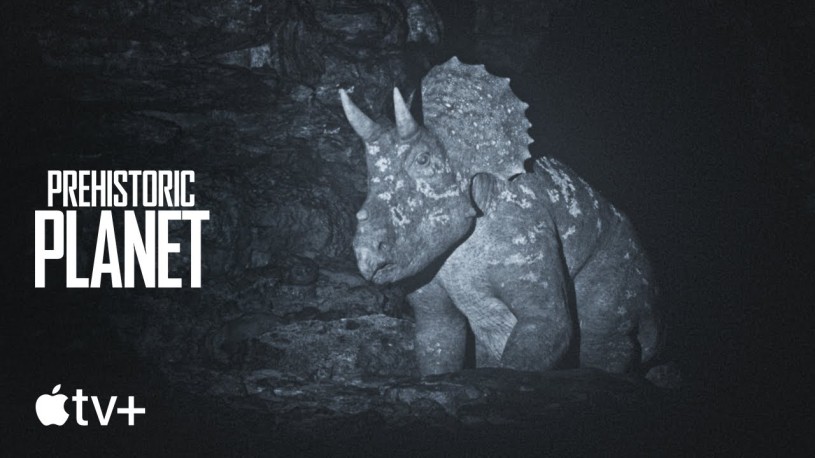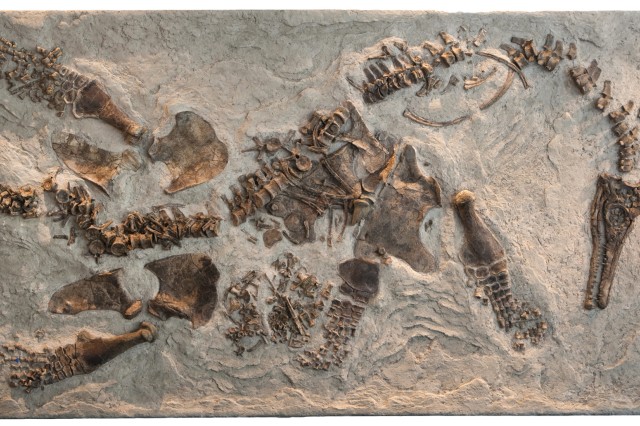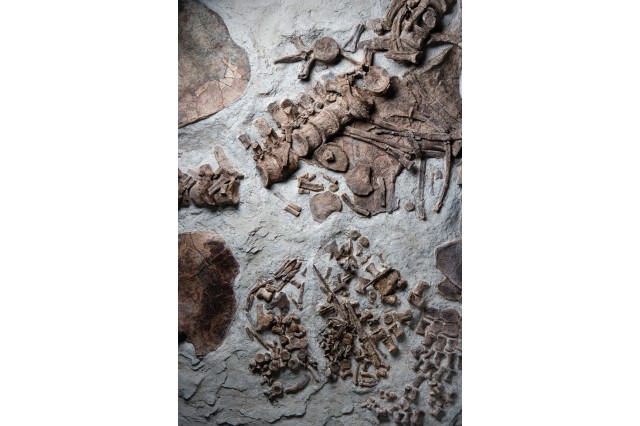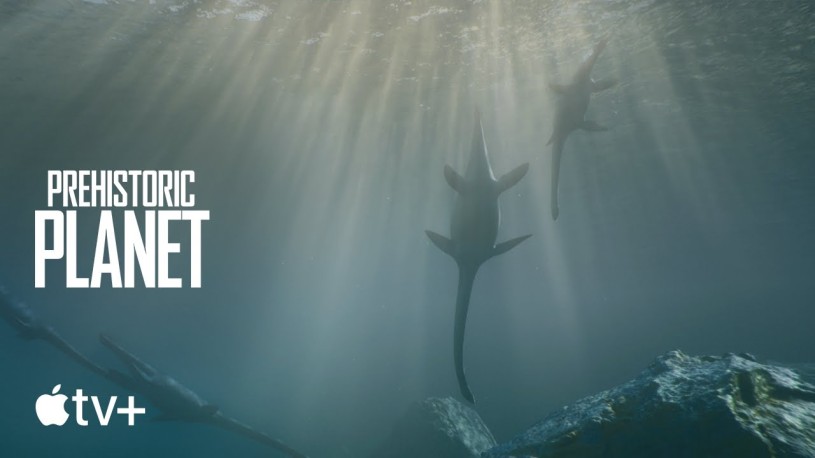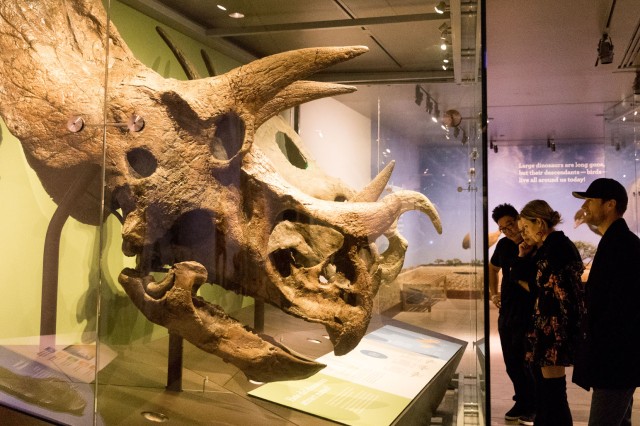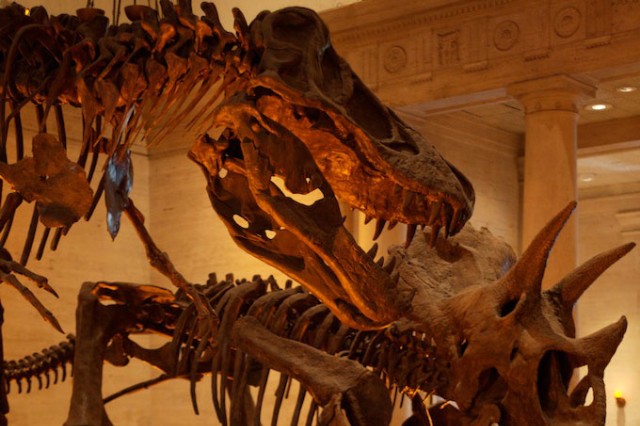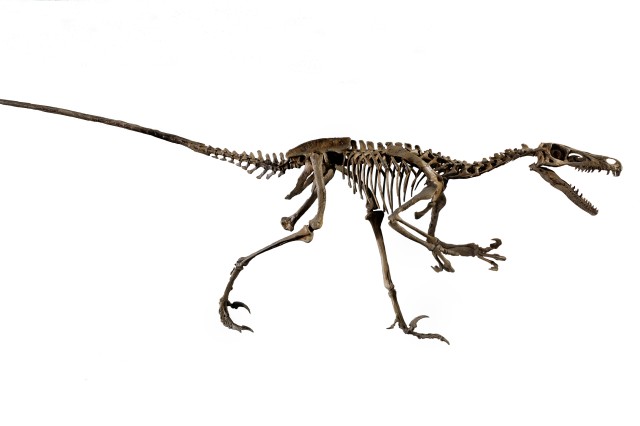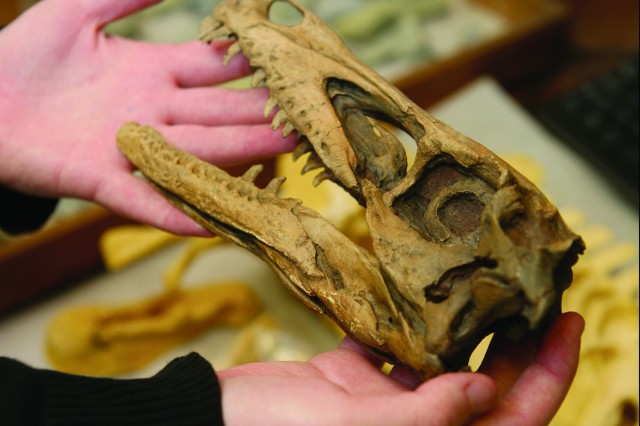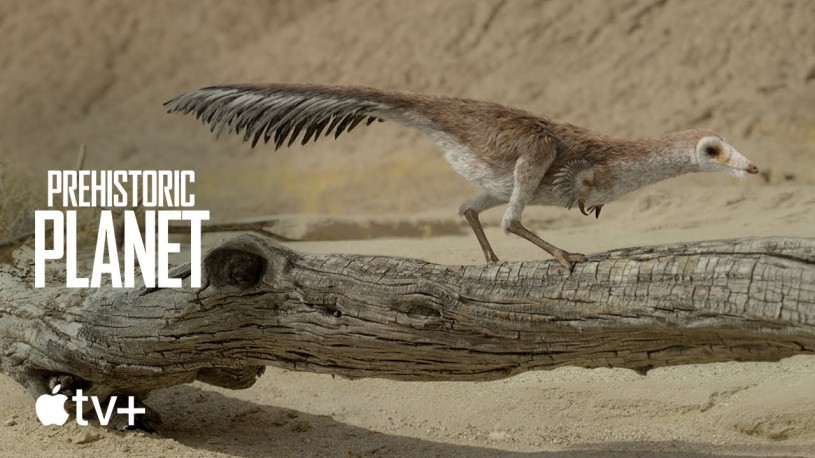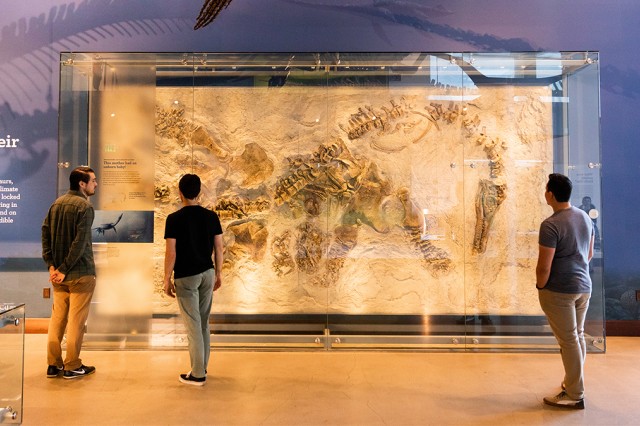Prehistoric Planet
Self-Guided Tour
How do we know what we know about Earth’s long-extinct titans? Our Dinosaur Hall and Prehistoric Planet streaming now on AppleTV+ have the answers! Scroll through the images to take the self-guided tour.
Triceratops
What sort of habitat did Triceratops stomp around in?
Many of the NHM’s Triceratops specimens come from the Hell Creek Formation of Montana, which records the end of the Cretaceous period around 66 million years ago. Paleontologists have reconstructed this environment as a low-lying floodplain with subtropical forests.
Can you imagine a group of Triceratops traipsing through a Late Cretaceous forest or a cave as in this scene?
Plesiosaur
What would you find inside this marine reptile's belly?
Ocean-dwelling plesiosaurs may look like dinosaurs, but they represent a completely different evolutionary group of marine reptiles. Thanks to spectacular fossils on display at NHM, such as this Polycotylus, we know that these marine reptiles had live births! This specimen comes from the Cretaceous of Kansas, a time when a vast seaway stretched across the continent, but we also have plesiosaurs from right here in California! Head upstairs to see a complete skeleton of Morenosaurus from the Late Cretaceous of Fresno County.
tyrannosaur-ceratopsian face-off
Can you picture a tyrannosaur-ceratopsian face-off?
Triceratops is named for its distinct horns, which could have been used as a defense against predators. And it would have needed to play defense, because an adult Tyrannosaurus rex could have bitten with a force of 6 tons! Check out our Dueling Dinos in our main foyer after the tour to see a T. rex and Triceratops locked in battle! Different species of tyrannosaur and ceratopsian may have faced off in all kinds of Cretaceous environments, including polar regions like in this scene.
Tyrannosaurs and ceratopsians were some of the titans of the Late Cretaceous, but what can some of our *slightly* smaller dinosaurs tell us about life in the Cretaceous and the origin of birds.
Velociraptor
What other feathered dinosaurs can be found in the Gobi desert?
Velociraptor and its close relatives from the Gobi desert of Mongolia have provided some of the strongest links for the dinosaurian ancestry of modern birds. It’s only in the past 15 years that we found definitive proof Velociraptor was feathered, and we continue to expand our knowledge of the diversity of feathered dinosaurs and the insight they can provide about avian evolution. Some other species from the Gobi desert were truly bizarre-looking, with ecologies we wouldn’t traditionally associate with dinosaurs. How do you think the odd-looking Mononykus made its living?



